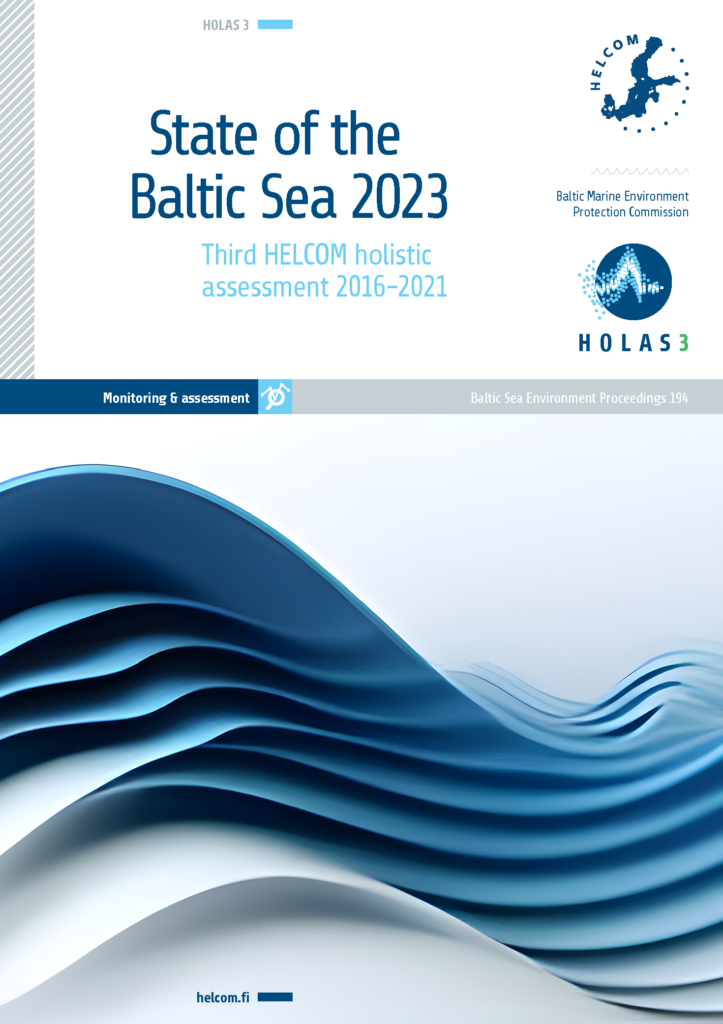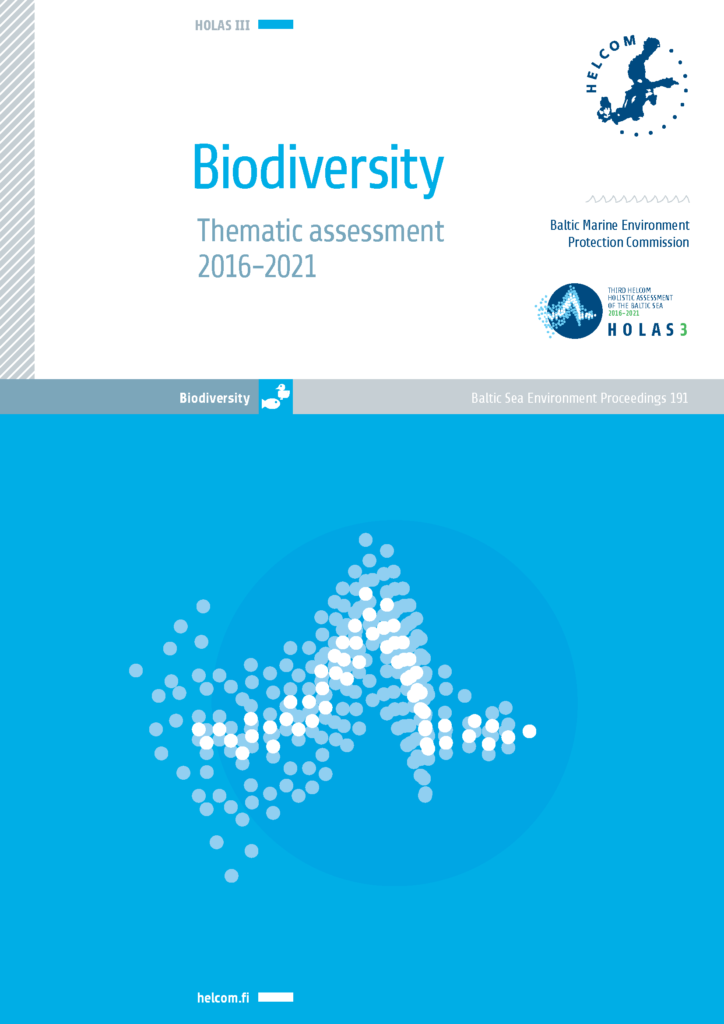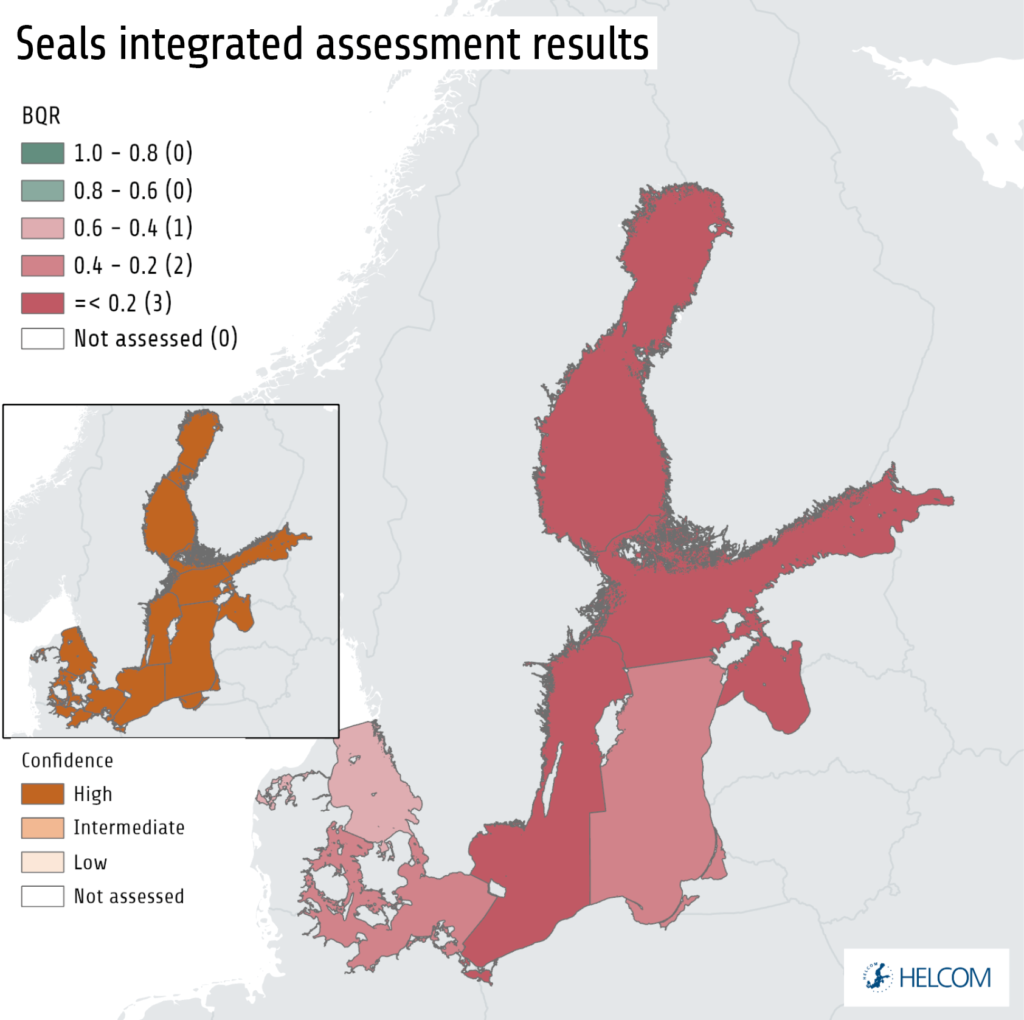MARINE MAMMALS
The status of marine mammals
Marine mammals (Figure 3.12) exhibit not good status in the Baltic Sea (Figure 3.13). While grey seal (Halichoerus grypus) and harbour seal (Phoca vitulina) are increasing in some areas, over- all population growth rates are assessed as too low, and neither the reproductive nor the nutritional status reach their threshold values. The quality of monitoring data to evaluate the status of ringed seals (Pusa hispida) in the Bothnian Bay has decreased due to behavioural changes in the population, possibly attributed to a warming climate. The status of the harbour porpoise (Phocoena phocoena) in terms of both abundance and distribution is not good for any of the Baltic Sea populations, based on a qualitative evaluation.
Why is this important?
Marine mammals of the Baltic Sea have strong cultural and historical importance, contributing to recreational values and ecosystem appreciation.
As top predators marine mammals regulate the distribution, abundance and health of a variety of prey species.
Because they are highly mobile, marine mammals play an important role in nutrient transfer across different parts of the sea.
The health of marine mammals can be a sensitive signal of broad-scale or diffuse environmental changes.

State of the Baltic Sea 2023 — The third HELCOM holistic assessment (HOLAS 3)
State of the Baltic Sea 2023 is a synthesis report that builds on, and integrates, results from a wide range of assessment products produced within the third HELCOM holistic assessment. Its role is to link information from the underpinning assessment products together, thus highlighting the holistic aspects. With this in mind, the summary report focuses on presenting the results and on an in-depth look at why we are seeing these results, providing over-arching context and analysis. The report helps develop a clearer picture of where we are and how things are connected, supporting coordinated and effective measures to strengthen the Baltic Sea environment.

Thematic assessment
Biodiversity
The thematic assessment report on the biodiversity status of the Baltic Sea (HELCOM 2023a) presents results from status assessments relating to biodiversity, based on HELCOM indicators, integrated assessments and regionally agreed data for the years 2016-2021. The assessment reveals improvements in spatial coverage compared to HOLAS II (2011-2016), incorporates new indicators and introduces novel topics. For the first time, trends for indicators and assessment results are compared across assessment periods.
However, further work remains to fill gaps in spatial coverage, improve precision of HELCOM indicators and to strengthen relevance to ecosystem-based management.

